Hard to Read is a traveling lit series that has thus far being running for 19 months with 28 events held in four cities, featuring 140 readers. The programming is composed, in part, of recommendations, which is how Los Angeles-based Brazilian performance artist Cade came to organizer Fiona Duncan’s attention.

Taking part in the ‘masculinity’-themed reading on Valentine’s Day eve, February 13, in a black, red, and leather-clad space called ‘The Paddle Room,’ Cade was one of six readers, sharing a memoir that he called a manifesto, which reads as follows:
**
‘Xenomaskuline Manifesto’ by Cade
I am Cade. I identify as trans-masculine. I don’t consider myself to be a man, but I am a body who performs a historical attitude known as masculinity. Masculinity is fairly new to me. I have only been identifying this way for about eight months. My transition comes with shock and skepticism from my friends, family, and thousands of strangers on social media. This is because there was a time when I made my entire living out of performing a hyper-feminine character.
I was marketed as a ‘Brazilian Bombshell.’ I was a glamour model. I had fake tits that had been implanted into my chest by my own plastic surgeon father back in Brazil. My work consisted of twerking or holding a glass of champagne in music videos for artists like Lil Jon, Chris Brown, or Nicki Minaj. Sometimes I would stand next to a sports car at the Staples Center in high heels for eight hours. I was in several men’s magazines including Smooth Magazine, a publication intended specifically for heterosexual African American men. I was on the cover of Spicy Magazine, tagline — “The world’s sexiest latinas.” Someone emailed me to say they used to look at this every single day, in jail. I did many, many photoshoots for lonely men with amateur photography skills who just wanted to get some shots for their portfolio, celebrating the female figure.

What began as a sexy, liberating exercise in unveiling my own femininity transmuted into a stale, miserable task. It was not about my own sexuality, it was about what straight men are made to think they desire by people who have the means to create and promote images but lack complexity or innovation in their approach.
There was nothing I could do to eliminate those pictures of myself pretending to be playing tennis in high heels and a bikini from thousands of Tumblr blogs but I could do something to reinvent myself. Perhaps, I could explore a new gender. What about masculinity? It can’t be that hard. After all, according to the great Judith Butler, gender is nothing but a performance that gets renewed and revised through time.
I had been wearing a monochromatic wardrobe of black and listening to abrasive sounds when I encountered ‘RAPE,’ a manifesto written by the noise musician and satanist Boyd Rice. Boyd waxes poetic about how men have been historically superior to women based on biological truths associated with testosterone. I cannot say that I loved this essay, but it did spark a flame of curiosity: What must it feel like, to have an abundance of testosterone running through my veins? That’s when I was introduced to Testo Junkie, wherein trans-masculine author Paul B. Preciado dedicates a period of life to taking testosterone. The book builds out a seductive frame for thinking about what the biopolitical experience might mean.
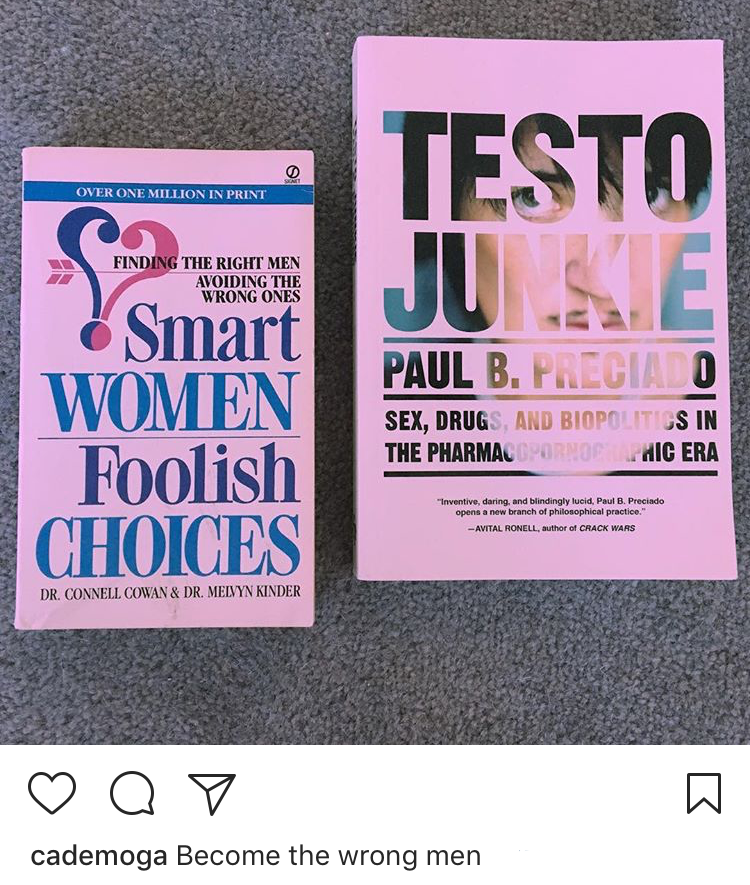
The Enemy Hormone: Testosterone and Gender Terrorism
The 21st century began with the first attempt to market a patch for testosterone for cis-females. In 2004, after several years of clinical tests, the US Food and Drug Administration refused Procter and Gamble authorization to market Intrinsa, the first patch, which administers three hundred micrograms of testosterone a day to cis-females as a remedy for “hypoactive sexual desire disorder” (HSDD), or lack of sexual desire. The product was intended, according to Procter and Gamble, for “women who have had their ovaries removed,” but the company was hoping to indirectly reach a much larger public: all the consumers of the Pill who were suffering from lowered testosterone levels. (…) It was the opinion of this committee that “despite the promising results of this substance in improving the sex lives of patients, its use does not seem to be justified.”
— Paul B. Preciado, Testo Junkie
This book teased and accelerated my desire to biohack my gender.
Initially, I had a friend use Bitcoin to get me some testosterone off the dark web. We injected it together. He is a cis male but I guess he wanted to get swole. I was on it for a month and having orgasms of a new hue. My skin started to gain a rugged texture and there was an increasing raspiness to my voice. If I didn’t accept coming out as transgender, I’d have to admit that I am addicted to testosterone. Given my adopted interest in performing masculinity, it seemed effective for me to label myself as transgender and let the fine staff of the Los Angeles LGBT center believe that they could offer a cure for my “gender identity disorder” all of which has been covered by my insurance.
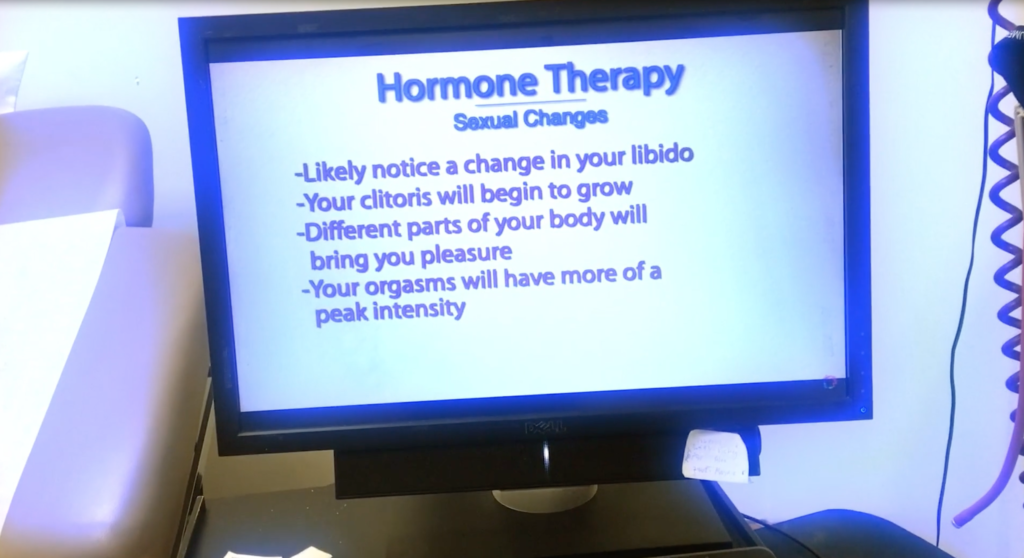
Ironically, on the day I decided I was going to transition, the person who gave me the book Testo Junkie broke up with me during my lunch break. In a testo-maniacal rampage I went home and packed all my remaining lace underwear, fishnets, and a pair of patent leather high heels into a large black trash bag. I ordered a pack of 12 Calvin Klein black men’s underwear off Amazon. The next morning, before work, I looked in the mirror, shaved my head, and said, “I am not a she.”
From then on my radical urge to become masculine only increased in potency. I made a list:
Cade must get his tits cut out.
Cade must legally change his name and gender.
Cade shall perform curated masculinity.
Cade shall revise his dance moves to resemble Sam Rockwell’s.
Cade shall reinvent his mannerisms, the affect in which he speaks.
Cade shall always sit with his legs spread as if to make space for a phallus.
Cade shall assertively merge left into a busy boulevard.
Cade shall learn directions.
Cade shall never fall in love.
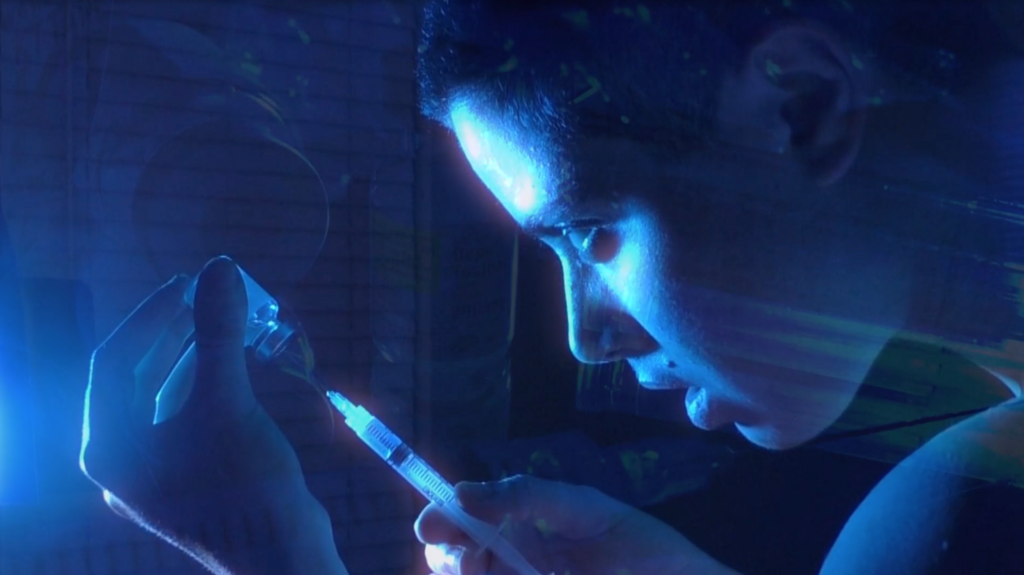
As a teenager, I had adored Oscar Wilde’s character, Dorian Gray. What a role model. The strapping, queer, hedonistic aristocrat. Enchanting the hearts of his sexual associates, only to shatter them in sadistic masculine glory, looking like an angel all along. But the Dorian phenomenon must occupy a masculine body.
A masculine body, even an objectifiable one, holds power, privilege, and affect the way a feminine body does not.
Cade shall become Dorian.
Cade masturbates his clitocock to every new hair that appears on his upper lip. The syringe needle breeds testosterone into a female body that has cluttered the internet with redundant heteronormative garbage. A few months go by and I become severely alienated from friends, family, and sexual partners. I lost 5,000 followers on social media. The ones who remained curious were accusing me of ‘roid rage.’ They had followed a Brazilian bombshell who was now failing to deliver boners. I was covered in acne, had not had sex with another human in two months, was angry, scared, and still performing a twisted interpretation of whatever I was calling ‘curated masculinity,’ but the two friends I had left were calling it ‘toxic masculinity.’
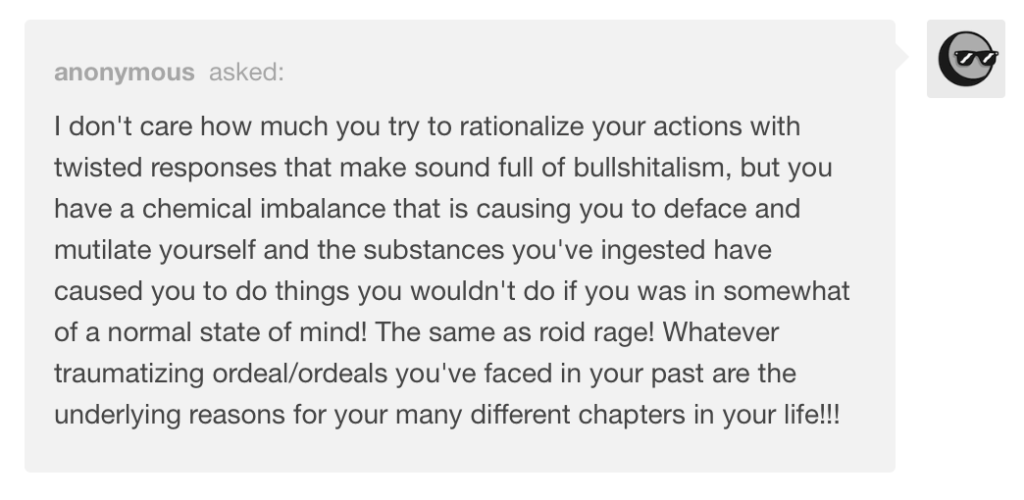
I had to acknowledge that I was not becoming Dorian, I was more like the accelerated, hysterical, cartoonish parody of masculinity enacted by Jim Carrey in the movie The Mask.
I had idolized masculinity.
I had attempted to reproduce masculinity and I had failed, for I was not passing, neither was I desirable.
I forced everyone in my life to think critically about the power and illusion of gender.
I sparked curiosity around access to hormones.
I had self-destructed and I had been undeniably bold.
I learned that masculinity does not always come with privilege. It can be vulnerable and challenging. When I presented as a feminine icon, I was always welcome, I was a commodity, I had 10 bonus points. I did not have to ask, I was offered. When I present as masculine, I am a threat, I am unnecessary. I have 10 negative points until I can prove I’m worthy, either by making someone laugh, or intimidating them with intellectual jargon, or perhaps paying a sensitive compliment; or money.
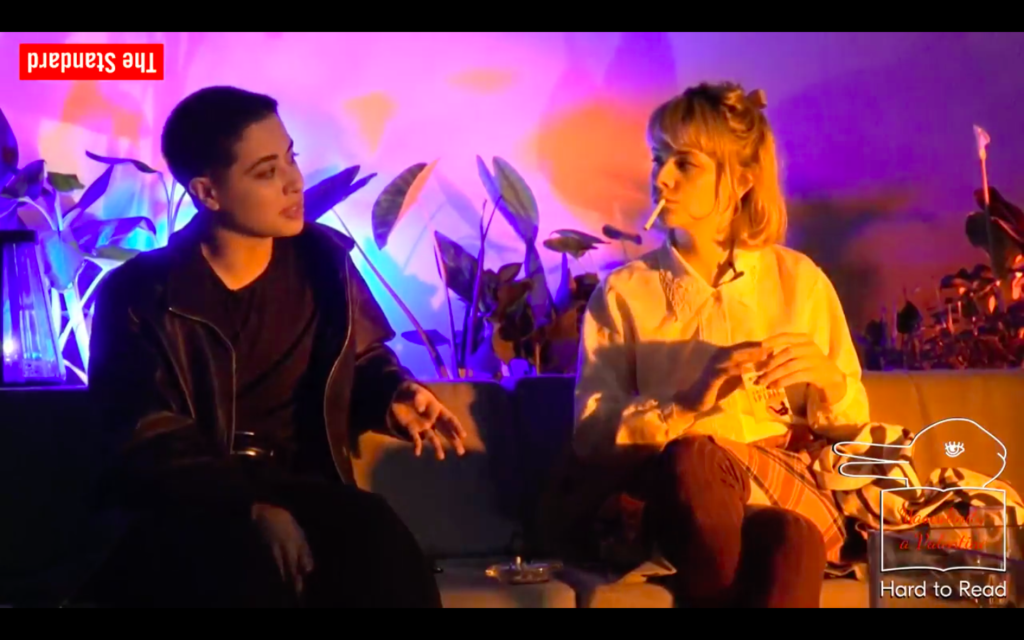
You could say that my recent theories on gender are products of transgender humiliation and testo-mania: Are we really going to change all the history books that refer to humans as “men” or “he” to become gender-neutral? Are we deconstructing patriarchy by labeling most cultural events as “safe spaces for femme-identified artists”? What if by attempting to reproduce the aristocratic cis man and failing, we show him to himself, much like Dorian when he sees his own portrait? What if we all hijacked male pronouns, making “him” the new gender neutral?
Men become lost in a sea of Xenomaskuline monsters alike.**
Email fad@hardtoread.us to RSVP or for more information.














